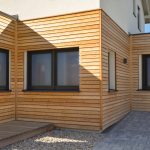What is sustainability?
When we talk about sustainability, we mean the ability to meet the needs of the present without compromising the ability of future generations to meet their own needs. Sustainability seeks to find a balance between economic development, environmental protection and social well-being.
Sustainability involves the responsible management of natural resources, the reduction of the ecological footprint and the adoption of practices that protect our environment. It is a principle that pursues the balance between human beings and their environment, recognizing that natural resources are finite and must be used efficiently and responsibly.
This approach is also about making informed decisions, promoting innovation and green technologies, and encouraging public education and participation in decisions that affect the environment. Sustainability requires an ongoing commitment to ensure that today’s actions do not jeopardize tomorrow’s opportunities.
In this article, we will explain the importance of sustainability and how it is closely related to the responsible use of wood in construction. We will see how sustainable practices not only benefit the environment, but can also boost economic development and improve people’s quality of life.
The use of a renewable material
At Pallars Fustes, we use wood as the main material for construction due to its sustainable nature and the importance we attach to sustainability.
We fight climate change by acting real and using wood in our buildings.
As they grow, trees store CO₂ from the atmosphere. It is estimated that one cubic meter of wood contains around one tonne of CO₂, equivalent to the consumption of 350 liters of petrol. It is sustainably captured after logging and during its use as wood, as well as when it is recycled.
Gray energy refers to the energy used during the life of a material, from the extraction of the materials necessary for its manufacture to the end of its useful life, including the stages of manufacture, transport , use, destruction and recycling.
Wood requires very little energy for its extraction and transformation, and is easily recycled, therefore, the gray energy needed to build the structure of a wooden building and its environmental impact will be much lower than with other materials.

Important aspects of energy efficiency in wooden buildings
- Minimization of thermal bridges: Wooden structures are effective in minimizing thermal bridges, which are areas where heat is lost quickly. Unlike metal, wood offers better resistance to heat flow, helping to maintain a more stable interior temperature.
- Heat storage and release: Wood has the ability to store heat and release it slowly, helping to maintain constant interior temperatures. This process of gradual release of heat reduces the dependence on heating and cooling systems, optimizing energy consumption.
- Insulating properties: The natural properties of wood as a thermal insulator mean that houses built with this material need less energy to stay warm in winter and cool in summer. This not only lowers energy costs but also reduces the environmental impact of energy consumption.
By opting for Pallars Fustes wooden houses, you are choosing a sustainable option that combines comfort, ecological responsibility and a vision of the future.
Durability and resistance
Certain types of wood, such as teak, oak and cedar, possess exceptional natural durability thanks to their inherent chemical compounds, which make them resistant to rot, insects and adverse weather conditions. In addition, wood has the ability to absorb shock and dynamic loads better than many other materials, reducing the risk of fracture and structural failure under stressful conditions, such as earthquakes and high winds.
In addition, wood can offer good fire resistance if it is properly sized and treated with fire retardants. Because of their durability and strength, well-maintained wooden buildings can last for centuries. Historical examples of wooden structures, such as temples and cathedrals, are testimony to this longevity.
The strength of wood decreases the frequency with which renovations or reconstructions are required, saving resources, time and costs in the long term. By reducing the need for renovations and reconstructions, the extraction of new natural resources is reduced, which contributes to the conservation of forests and other ecosystems, protecting biodiversity and sustainability.
The longevity of wooden constructions means less demolition waste. Discarded construction materials are a significant source of waste in landfills, so a longer lifespan of structures reduces this environmental burden.
The ability to renew and recycle wood
- Mitigation of Climate Change: Wood, being a renewable material, can be regenerated through reforestation and sustainable forest management. During their growth, trees absorb carbon dioxide from the atmosphere, storing carbon in their biomass. By using wood in construction, this carbon is trapped in the structures throughout their useful life, which contributes to the reduction of greenhouse gases in the atmosphere.
- Circular Economy: The circular economy is based on the efficient use of renewable biological resources. Wood fits perfectly into this concept because it can be recycled and reused in various ways. At the end of their useful life, wood products can be decomposed and transformed into new products or used as biomass for energy generation, thus closing the life cycle of the material and reducing the need for new resources.
At Pallars Fustes, we understand that sustainability is fundamental for the future of our planet, which is why we carefully select wood and apply innovative techniques to maximize energy efficiency and minimize environmental impact. Our dedication to quality and durability ensures that the wooden structures we build are not only eco-responsible, but also able to last for generations.
Discover more about the sustainability of wood and construction on our website!




